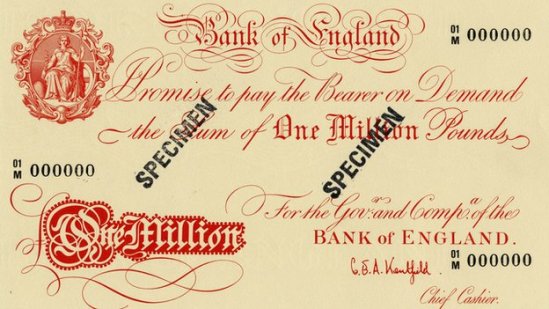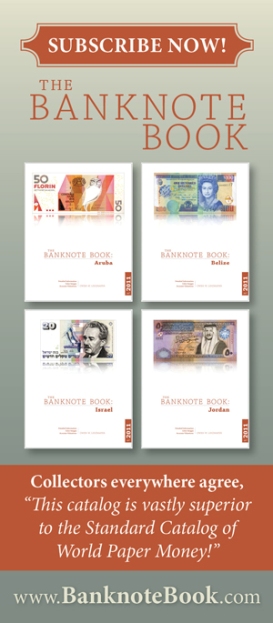German newspaper Die Welt has published several articles about the history and design of banknotes. Several of these can be read online so if you can read German or know how to use Google Translate, you can find some below:
- Diese Scheine waren der Ursprung der Hyperinflation (These notes were at the origin of the hyperinflation)
- Wie Tito auf Guineas Banknoten kam (How Tito ended up on a banknote from Guinea)
- Die rätselhafte Marktfrau auf dem Bahamas-Dollar (The mysterious market woman on the Bahamas dollar)
- Der italienische Maler, der alles falsch machte (The Italian painter who did everything wrong)
>> More articles can be found here.
 Reserve Bank of India's Governor Raghuram Rajan today said that nobody but Mahatma Gandhi should feature on the currency notes. "There are so many great Indians, but of course he (Gandhi) stands above head and shoulders above every one. There are many great Indians that we could get on the notes. But I sense that almost anybody else would be controversial," the Governor said.
Reserve Bank of India's Governor Raghuram Rajan today said that nobody but Mahatma Gandhi should feature on the currency notes. "There are so many great Indians, but of course he (Gandhi) stands above head and shoulders above every one. There are many great Indians that we could get on the notes. But I sense that almost anybody else would be controversial," the Governor said.
The commemorative 20 zlotych banknote from Poland which is described in more detail here, can now be bought at the online shop of the National Bank of Poland. The price is 60 zlotych (about 15 euro or 19 dollar) excluding shipping costs.
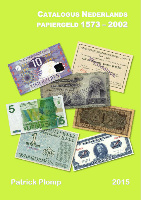 I live in the Netherlands and I'm dutch but until recently I've never had any 'extra' interest in dutch banknotes. For me as a collector they were just as valuable or in demand as banknotes from any other country. But lately I've taken more of an interest in the heritage of my own country and have been acquiring more dutch notes.
I live in the Netherlands and I'm dutch but until recently I've never had any 'extra' interest in dutch banknotes. For me as a collector they were just as valuable or in demand as banknotes from any other country. But lately I've taken more of an interest in the heritage of my own country and have been acquiring more dutch notes.
One of the problems you quickly face when collecting dutch banknotes is that they are generally speaking more expensive than other banknotes. Not a lot of dutch banknotes can be found in the 1-euro-per-note-baskets at dealers. A second problem is that the existing catalogs are far from complete. Most catalogs like The Standard Catalog of World Paper Money have only (most of) the standard notes and hardly any varieties.
One member of the dutch chapter of the IBNS, Patrick Plomp, has taken the initiative to compile a new catalog of dutch banknotes which promises to be the new bible for this field of collecting. Every banknote and every variety which has ever circulated in the area we now call the Netherlands (from 1572-2002) will be described, priced and shown. It's not surprising that the end result of all this research provides us with a catalog of about 450 pages. An example can be found here.
The catalog is supposed to be issued in the last quarter of this year and the retail price will be € 34,95. You can also choose to pre-order one today and receive a discount of 15%. More info can be found here.
A nice article on the so-called Educational Series from the 1890's. Some of the most beautiful banknotes the United States has ever had.
The website Romania Insider has a nice article describing and explaining all the people and imagery which can be found on the beautiful Romanian banknotes.
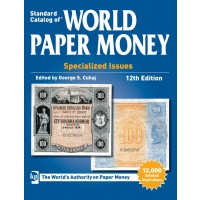 If you hurry you can pick up some nice catalogs for a bargain. At shopnumismaster.com all ebooks are now offered with a 75% discount. I like to have my catalogs on my iPad so I can bring them with me to fairs and dealers.
If you hurry you can pick up some nice catalogs for a bargain. At shopnumismaster.com all ebooks are now offered with a 75% discount. I like to have my catalogs on my iPad so I can bring them with me to fairs and dealers.
I managed to pickup the 12th edition of the Standard Catalog of World Paper Money Specialized Issues as well as the 32nd edition of the Standard Catalog of US Paper Money yesterday. Normally this would cost me 122 dollars but I got them both for 30 dollars! This offer expires tonight so hurry!
The latest and 20th edition of the Standard Catalog of World Paper Money Modern Issues can also be bought for a bargain at $17.50.
Check out this interview with Malcolm Knight, a former research and development director and now consultant at De La Rue. In it he talks about banknotes, design, De la Rue and the future of paper money. Interesting read!
A quick reminder that this weekend 11-13 April 2014 the Papermoney Fair Maastricht will be held in Valkenburg a/d Geul. Over 200 dealers will be present: it´s completely sold out! That means more than enough choice for us collectors. More info about the event can be found on this website (don't judge the fair by the horrible layout of the site: it's way better in real life!).
 The Reserve Bank of Australia has published a paper on the Next Generation Banknote Project (PDF). This project aims to enhance the security of future banknotes from the land down under. The "NGB"-series will maintain the current color schemes and the people portrayed on the notes. The new series will still be printed on polymer but the design will be enhanced: more complex, intaglio and offset printing and multiple see-through windows.
The Reserve Bank of Australia has published a paper on the Next Generation Banknote Project (PDF). This project aims to enhance the security of future banknotes from the land down under. The "NGB"-series will maintain the current color schemes and the people portrayed on the notes. The new series will still be printed on polymer but the design will be enhanced: more complex, intaglio and offset printing and multiple see-through windows.
No date has been set but the new series will be issued in the coming years.
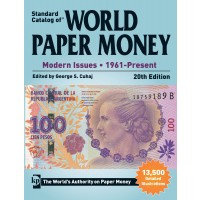 The letters SCWPM are familiar to any collector of banknotes as they stand for Standard Catalog of World Paper Money, issued by Krause Publications. Often criticized for its mistakes, omissions and flaws it is still the standard against which other (and better) catalogues are judged.
The letters SCWPM are familiar to any collector of banknotes as they stand for Standard Catalog of World Paper Money, issued by Krause Publications. Often criticized for its mistakes, omissions and flaws it is still the standard against which other (and better) catalogues are judged.
The latest issue of this catalog is the 2015 20th edition. Prices are all over the place but I managed to get hold of the digital version for a very good price. I like my catalogues on my iPad instead of having to carry a ton of paper around at fairs. Shopnumismaster has the digital (and paper) edition for $44,99 which is just over €30 for Europeans like me.
For that price and despite its obvious flaws, it's a bargain in my opinion.
As we all know banknotes can be true pieces of art. This becomes even more clear when you zoom in on all the details in the design of a note. And I mean, REALLY zoom in. Two famous banknotes have just gotten the gigapixel treatment and are ready for your viewing pleasure.
The new US 100 dollar can be found here as a 0.71 gigapixels photo, but the cherry on the cake is this US 2 dollar bill which is a whopping 8.26 gigapixels big! Thanks to /r/papermoney for finding these nice pics.
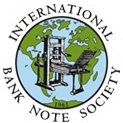 It's that time of the year again: the nominees for Banknote of the Year 2013 are awaiting your votes. Every year the International Banknote Society (IBNS) gives out this award which has been won by Kazakhstan for notes issued in 2011 and 2012. The 1000 tenge note from Kazakhstan which was released at the end of 2013 is one of the nominees and (in my opinion) one of the favorites to win the title.
It's that time of the year again: the nominees for Banknote of the Year 2013 are awaiting your votes. Every year the International Banknote Society (IBNS) gives out this award which has been won by Kazakhstan for notes issued in 2011 and 2012. The 1000 tenge note from Kazakhstan which was released at the end of 2013 is one of the nominees and (in my opinion) one of the favorites to win the title.
You can cast your vote here if you are a member of the IBNS (which I strongly recommend).
The nominees are (in no particular order):
My personal top 3 is:
- Russia's 100 rouble
- Canada's 10 dollar
- Kazakhstan 1000 tenge
One of the prime reasons for a central bank to introduce polymer banknotes is the added security 'plastic' money provides. But is this really true? Counterfeit polymer notes have been popping up here and there.
In general however the claim appears to be true. The Bank of Canada has announced that the number of counterfeited notes have dropped by 90% since the introduction of the polymer series. Of course counterfeiters will always try to, literally, make money but it appears that the polymer notes are indeed a bit harder to replicate.
 Last year I wrote about the Giant and the Titan, the two illustrious banknotes of 1 million and 100 million pound which are technically legal tender and are closely guarded by the Bank of England. They serve as backup for the Scottish banking system.
Last year I wrote about the Giant and the Titan, the two illustrious banknotes of 1 million and 100 million pound which are technically legal tender and are closely guarded by the Bank of England. They serve as backup for the Scottish banking system.
Channel 4 got a rare glimpse of these two banknotes (and could even hold them!) when they filmed an item on Mark Carney discussing the referendum on Scottish independence which will be held on 18 September of this year. Carney warned Scotland about the fiscal dangers of independence.
You can see the news item after the click:
Read More
« Previous page |
Displaying entries 46-60 of 121 |
Next page »

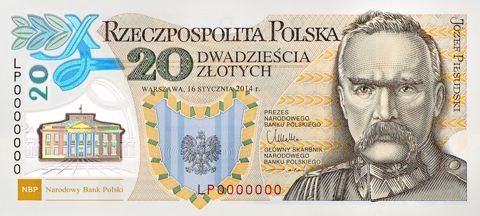
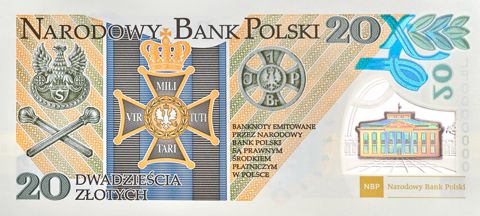
 I live in the Netherlands and I'm dutch but until recently I've never had any 'extra' interest in dutch banknotes. For me as a collector they were just as valuable or in demand as banknotes from any other country. But lately I've taken more of an interest in the heritage of my own country and have been acquiring more dutch notes.
I live in the Netherlands and I'm dutch but until recently I've never had any 'extra' interest in dutch banknotes. For me as a collector they were just as valuable or in demand as banknotes from any other country. But lately I've taken more of an interest in the heritage of my own country and have been acquiring more dutch notes. 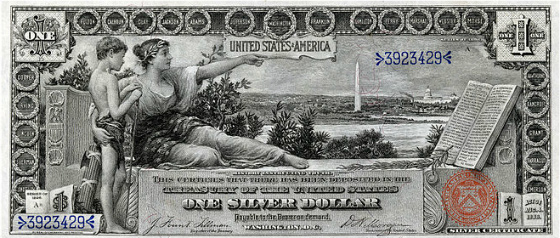
 If you hurry you can pick up some nice catalogs for a bargain. At
If you hurry you can pick up some nice catalogs for a bargain. At 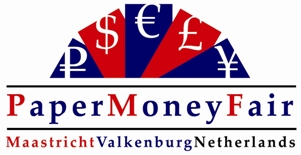
 The
The  The letters SCWPM are familiar to any collector of banknotes as they stand for Standard Catalog of World Paper Money, issued by Krause Publications. Often criticized for its mistakes, omissions and flaws it is still the standard against which other (and
The letters SCWPM are familiar to any collector of banknotes as they stand for Standard Catalog of World Paper Money, issued by Krause Publications. Often criticized for its mistakes, omissions and flaws it is still the standard against which other (and 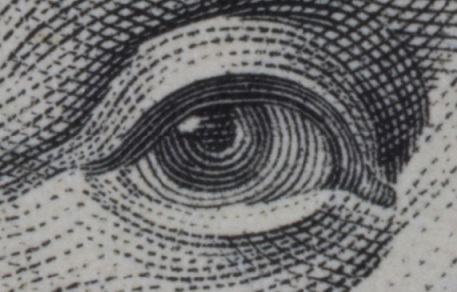
 It's that time of the year again: the nominees for Banknote of the Year 2013 are awaiting your votes. Every year the
It's that time of the year again: the nominees for Banknote of the Year 2013 are awaiting your votes. Every year the  Last year I
Last year I 